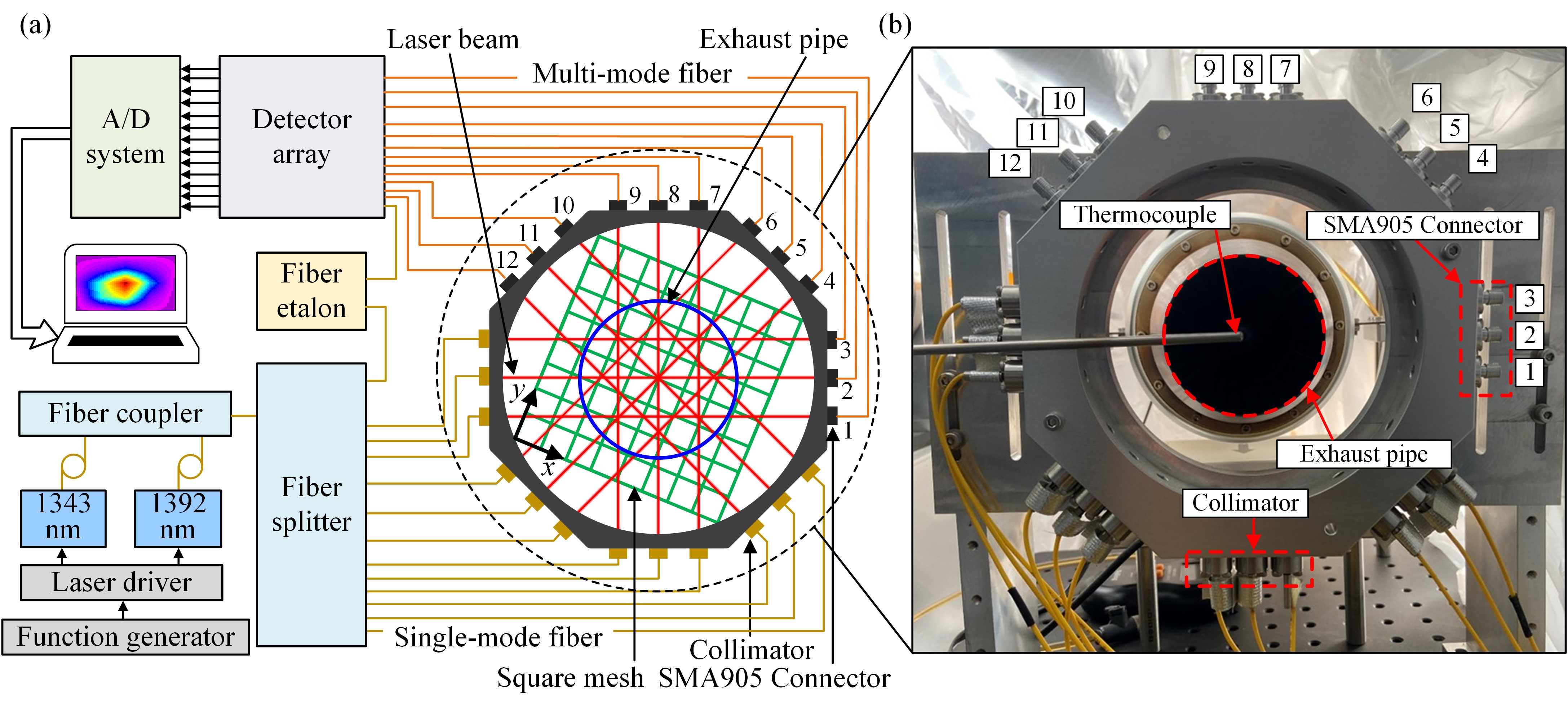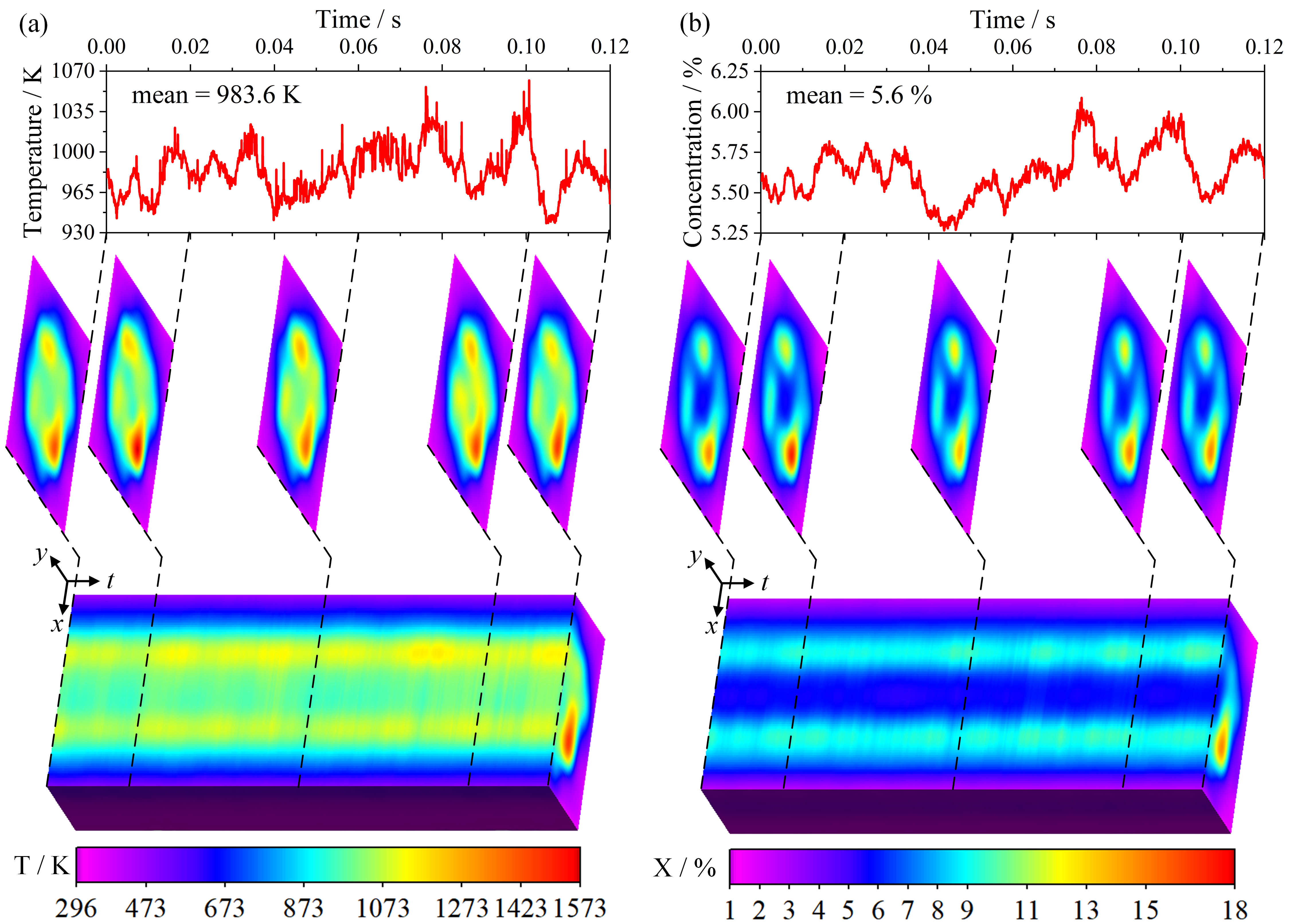
According to a study published in FUEL recently, a neural network-based absorbance recovery method was developed by a research group led by Prof. GAO Xiaoming and Prof. LIU Kun from the Hefei Institutes of Physical Science of the Chinese Academy of Sciences, to improve the accuracy of single path tunable diode laser absorption spectroscopy (TDLAS) measurement.
They applied it to tomographic absorption spectroscopy (TAS) and successfully measured the two-dimensional temperature and H2O concentration distributions on a small turbojet engine.
Measurement of combustion flow field temperature and component concentration distribution based on tomographic absorption spectroscopy can provide more comprehensive data for the design, monitoring and diagnosis of advanced combustion systems. It has the advantages of high speed, high sensitivity, and strong interference immunity. However, affected by the distortion of absorbance, the traditional single-path measurement error of TDLAS is relatively large, limiting the quantification accuracy of TAS.
In this study, researchers developed a neural network-based absorbance recovery method and demonstrated it through both simulation and experiment.
The focus was on solving the problem of baseline errors that distort absorbance measurements. They found that the derivative of absorbance is more sensitive to the line-shape curvature, and the variation of curvature caused by baseline error is relatively small near the absorption peak. Based on this, researchers designed the model to retrieve absolute absorbance profile from the derivative of the measured absorbance. They tested this method through simulations and single-path temperature measurements, and then applied it to measure the exhaust temperature and water concentration in a small diesel turbojet engine. The method's error was only 0.9% when compared to thermocouple readings.
“Our results provide a valuable method for improving the accuracy of TDLAS measurements and can be easily incorporated into tomographic absorption spectroscopy,” said Prof. LIU Kun.

Schematic of tomographic absorption spectroscopy measurement system. (Image by WANG Ruifeng)

Temporal variations of temperature and H2O concentration distributions. (Image by WANG Ruifeng)